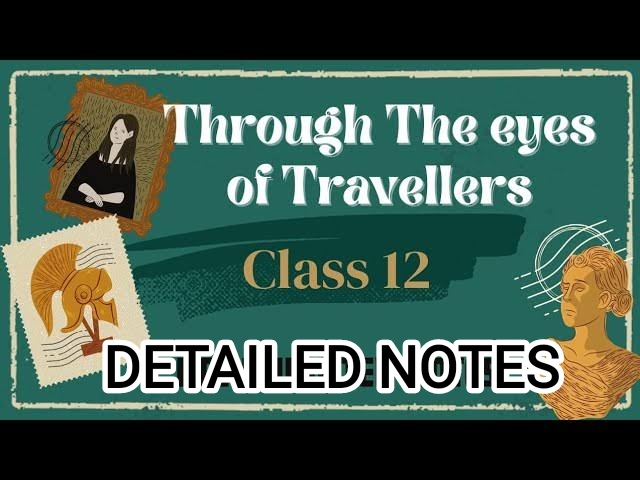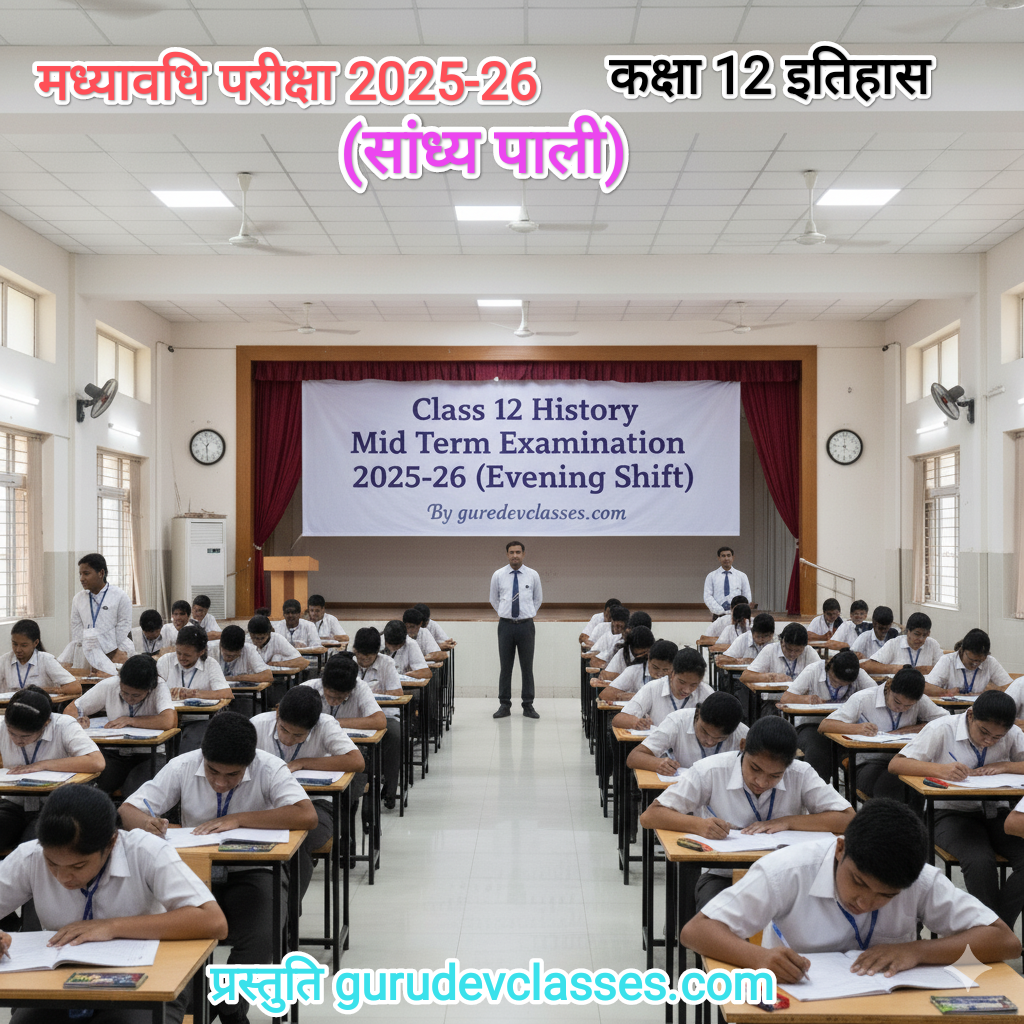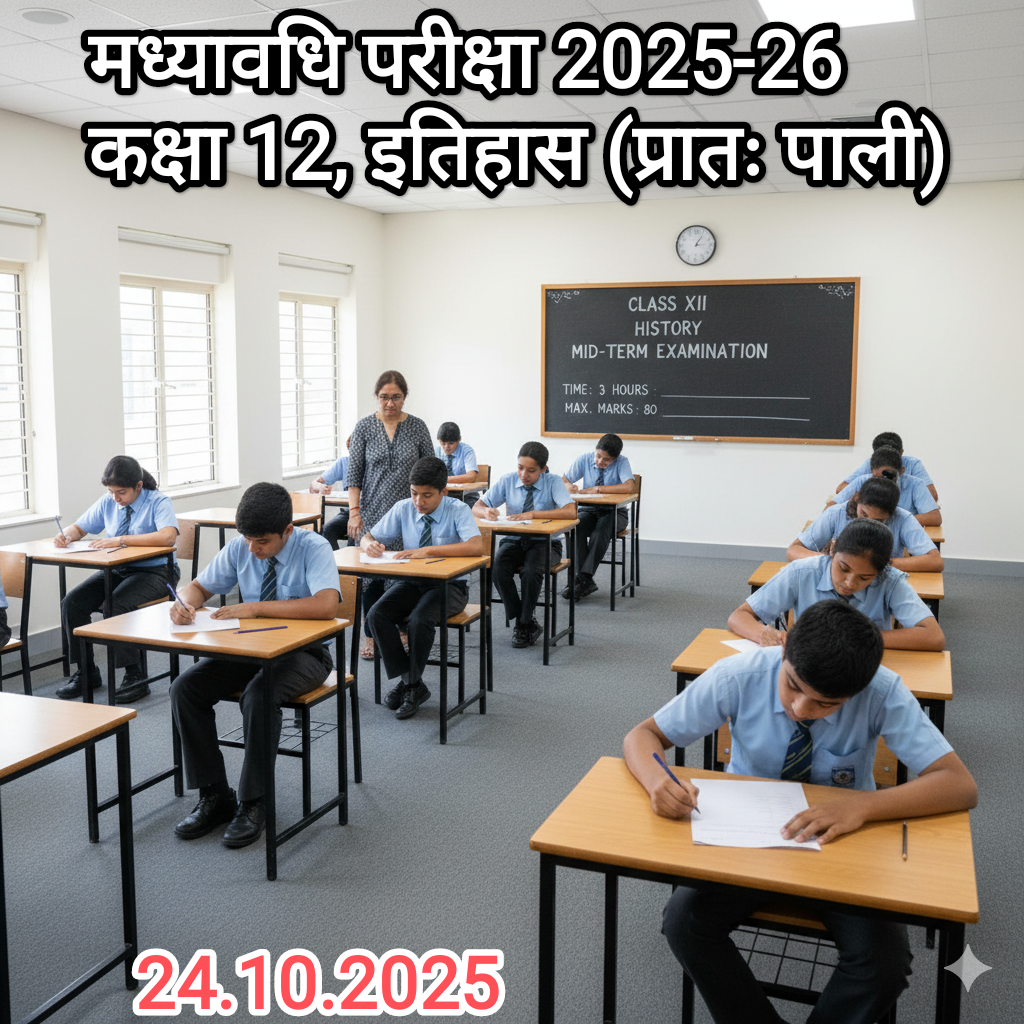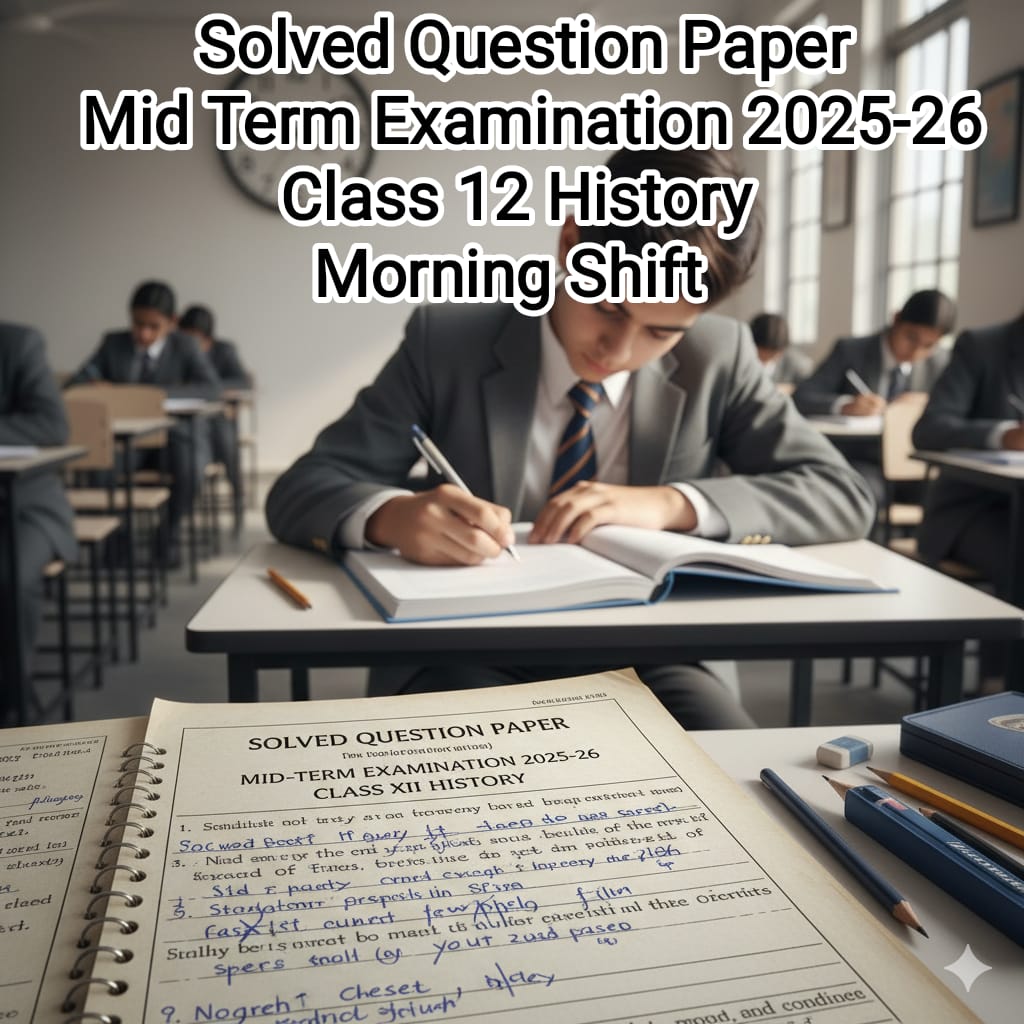(Perceptions of Society – From 10th to 17th Century)
1. Introduction –
Why Travellers’ Accounts Matter Historical Context: India attracted traders, pilgrims, explorers, and scholars due to its wealth, diversity, and spiritual traditions.
Significance: Travel accounts offer an outsider’s perspective and fill gaps in indigenous sources.
These accounts are subjective, shaped by their authors’ backgrounds, motives, and expectations.
Important for understanding:
(i)) Social customs
(ii) Political systems
(iii) Urban and rural life
(iv) Religious practices
(v) Cultural interactions
🛫 2. Travelling as an Experience
Types of Travellers:
(i) Pilgrims (e.g., Xuanzang, Al-Biruni)
(ii) Traders (e.g., Marco Polo)
(iii) Envoys/Diplomats (e.g., Megasthenes, Duarte Barbosa)
(iv) Adventurers/Explorers (e.g., Ibn Battuta)
(v) Scholars and Missionaries (e.g., Al-Biruni, Bernier)
Motives for Travel:
(i) Religion (spread or explore religious knowledge)
(ii) Trade
(iii) Curiosity
(iv) Service in royal courts
(v) Political/diplomatic tasks
(a) Al-Biruni (973–1050 CE)
Background
Born: Khwarizm (modern Uzbekistan)
Languages: Arabic, Persian, Greek, Syriac, Sanskrit
Arrived in India: Around 1017 CE with Mahmud of Ghazni
Lived in India for 13 years
Book: Kitab-ul-Hind (written in Arabic)
Combines descriptive and comparative methods
Methodology
Based on:
(i) Sanskrit texts (translated with help)
(ii) Observation
(iii) Comparison with Greek and Islamic traditions
🔶 Key Themes of Kitab-ul-Hind:
(i) Religion & Philosophy
(ii) Deep interest in Vedas, Puranas, Bhagavad Gita, Upanishads
(iii) Indian philosophy = concerned with metaphysical and spiritual topics
Key concepts: Dharma, Karma, Moksha, Samsara
Caste System (Varna & Jati)
India’s society is divided into 4 varnas:
(i) Brahmins
(ii) Kshatriya
(iii) Vaishyas
(iv) Shudras
Criticized social discrimination (especially untouchability)
Noted the hereditary nature of occupations
Language & Communication
Language barrier: Few people could translate Sanskrit to Arabic
Lack of interaction between Hindus and Muslims due to:
Language
Customs
Mutual pride/prejudice
Science & Mathematics
Admired Indian achievements in:
Astronomy
Mathematics
Medicine
Limitations of Al-Biruni
Relied more on texts than direct observations
Couldn’t interact with lower caste or non-elite groups
Biased towards Islamic worldview in some comparisons
4. Ibn Battuta (1304–1369 CE)
Background
Born: Tangier, Morocco
Book: Rihla (“The Journey”) – written in Arabic
Arrived in India: 1333 CE
Stayed in India: 7 years
Appointed Qazi by Sultan Muhammad bin Tughlaq
Travelled to: Delhi, Malabar, Maldives, Bengal, and China
Key Observations in India
Urban Life
India had dense, prosperous cities
Described Delhi, Daulatabad, Madurai, Calicut
Markets were full of activity, with specialized goods and zones
Postal System
Efficient postal network: Dak Chowkis and runners
Helped in communication across the empire
Social & Cultural Practices
Described Sati, slavery, and hospitality
Mentioned women in public roles (like in markets or farming)
Court Life & Administration
Praised royal generosity
Noted Sultan’s mercurial nature
Observed both opulence and cruelty in the court
Customs & Food
Noted Indian food was spicy and cooked with a variety of herbs
Surprised by people’s hospitality, even to strangers
Limitations
Often exaggerated or added dramatic details
Influenced by his Islamic background and courtly association
5. François Bernier (1625–1688 CE)
Background
French physician and philosopher
Visited India (1656–1668) during Aurangzeb’s reign
Worked for Dara Shikoh and later European trading companies
Book: Travels in the Mughal Empire
Key Observations
Political System
Described Mughal rule as despotic
Criticized crown ownership of land
No private property → peasants had no incentive → stagnation and poverty
Society
Criticized caste system and untouchability
Called India a land of “slavery and hierarchy”
Women: oppressed, especially through Sati and child marriage
Economy
India’s economy looked wealthy but was exploitative
Artisans and peasants were over-taxed
Art & Culture
Admired Mughal paintings, architecture, and gardens
Impressed by craftsmanship and luxury goods (textiles, jewelry)
Comparison with Europe
Compared India unfavorably to France
Projected Europe as more civilized, progressive, and free
Limitations
Eurocentric and biased
Used India to highlight absolutism and justify Western superiority
Overgeneralized entire Indian society.
📘6. Comparative Chart of 3 Travellers – Final Table
| Feature | Al-Biruni | Ibn Battuta | François Bernier |
|---|---|---|---|
| Time | 11th century | 14th century | 17th century |
| Origin | Central Asia | Morocco | France |
| Language | Arabic | Arabic | French |
| Book | Kitab-ul-Hind | Rihla | Travels in Mughal Empire |
| Focus | Religion, caste, science | Social life, cities, customs | Political system, economy |
| Limitations | Too text-based | Exaggeration | Eurocentric & critical |
7. The Value and Limits of Travelogues
📈 Contributions:
Provide first-hand observations
Help understand society, customs, administration, religion
Supplement other historical sources like inscriptions, texts, and archaeology
⚠️ Limitations:
Biased by their own culture and assumptions
Wrote mostly about elite society, less about common people
Language barrier affected accuracy
Often wrote to impress or please patrons
📚 Key Terms
Term Description
Rihla Travelogue (Arabic term)
Kitab-ul-Hind Book by Al-Biruni about India Varna Fourfold division of Hindu Society jati subcaste of occupational group Sati Widow immolation Despotism Absolute monarchy or autocracy Orientalist Western scholar studying Eastern
culture
📖 NCERT In-text and Box Topics Covered
Why was Al-Biruni critical of Hindus’ attitude to foreigners?
Ibn Battuta’s experience with Indian travel and transport
Bernier’s concept of “Crown Ownership of Land”
Differing attitudes towards Sati
Gender roles and women’s participation
Interaction of Indian and Islamic cultures
✅ Conclusion
The travellers’ writings are valuable sources that reflect how India was seen by outsiders over different centuries.
Their accounts help reconstruct social history, including urban life, caste, gender, administration, and religion.
These must be read critically, considering their biases, contexts, and purposes.







